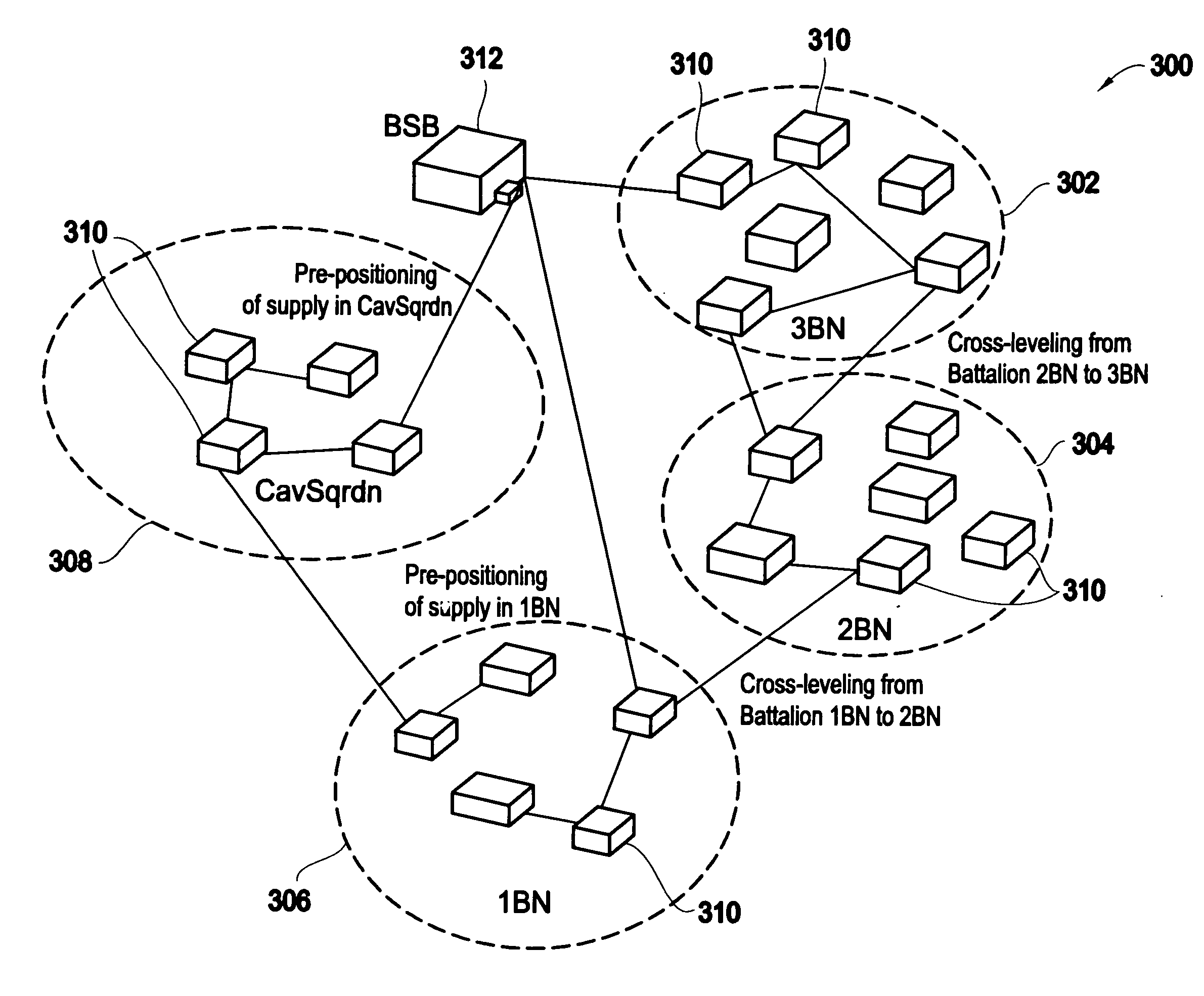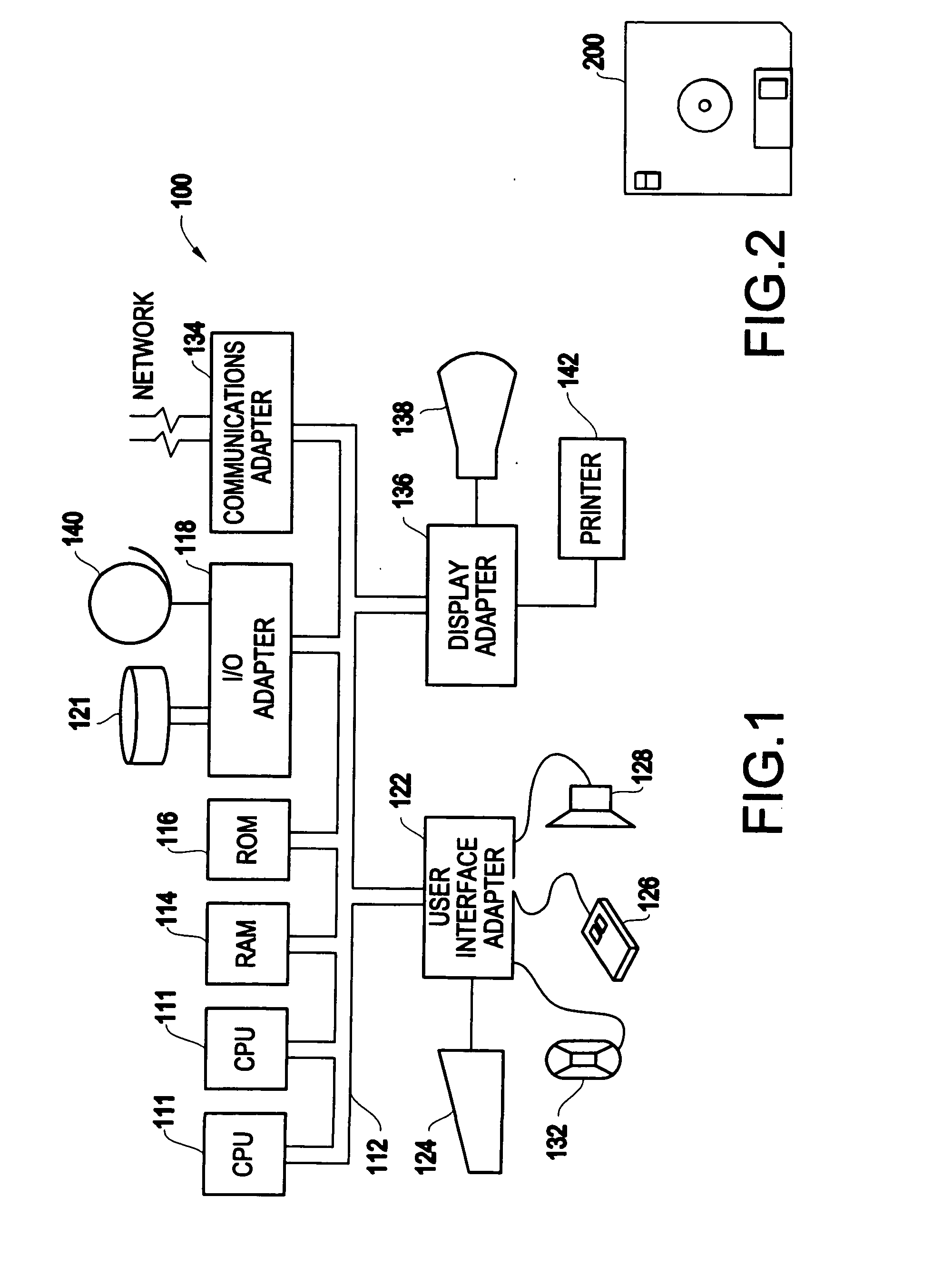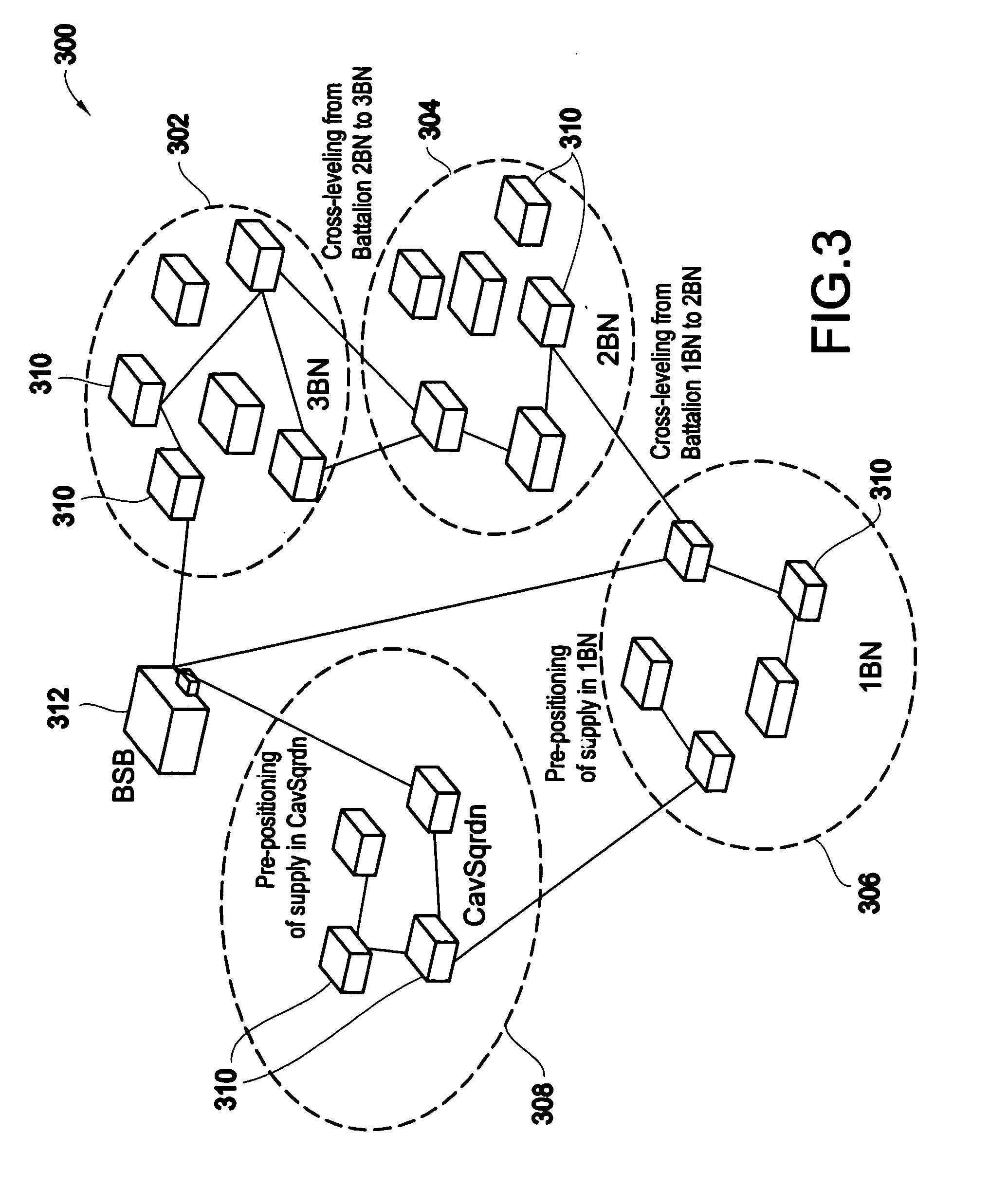Systems and methods for inventory allocation in mobile logistics networks
a logistics network and inventory technology, applied in the field of inventory allocation systems and methods, can solve the problems of low operational availability rate, high variability of items, and outpaced conventional inventory allocation systems, and achieve the effect of managing the replenishment of each entity within an organization efficiently
- Summary
- Abstract
- Description
- Claims
- Application Information
AI Technical Summary
Benefits of technology
Problems solved by technology
Method used
Image
Examples
Embodiment Construction
[0038] Referring now to the drawings, and more particularly to FIGS. 1-6, there are shown exemplary embodiments of the methods and systems of the present invention.
[0039]FIG. 1 illustrates a typical hardware configuration of an information handling / computer system for use with the invention and which preferably has at least one processor or central processing unit (CPU) 111.
[0040] The CPUs 111 are interconnected via a system bus 112 to a random access memory (RAM) 114, read-only memory (ROM) 116, input / output (I / O) adapter 118 (for connecting peripheral devices such as disk units 121 and tape drives 140 to the bus 112), a user interface adapter 122 (for connecting a keyboard 124, a mouse 126, a speaker 128, a microphone 132, and / or other user interface device to the bus 112), a communication adapter 134 for connecting an information handling system to a data processing network, the Internet, an Intranet, a personal area network (PAN), etc., and a display adapter 136 for connecting...
PUM
 Login to View More
Login to View More Abstract
Description
Claims
Application Information
 Login to View More
Login to View More - R&D
- Intellectual Property
- Life Sciences
- Materials
- Tech Scout
- Unparalleled Data Quality
- Higher Quality Content
- 60% Fewer Hallucinations
Browse by: Latest US Patents, China's latest patents, Technical Efficacy Thesaurus, Application Domain, Technology Topic, Popular Technical Reports.
© 2025 PatSnap. All rights reserved.Legal|Privacy policy|Modern Slavery Act Transparency Statement|Sitemap|About US| Contact US: help@patsnap.com



